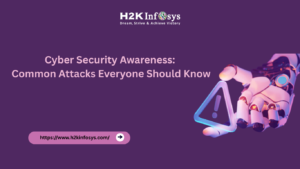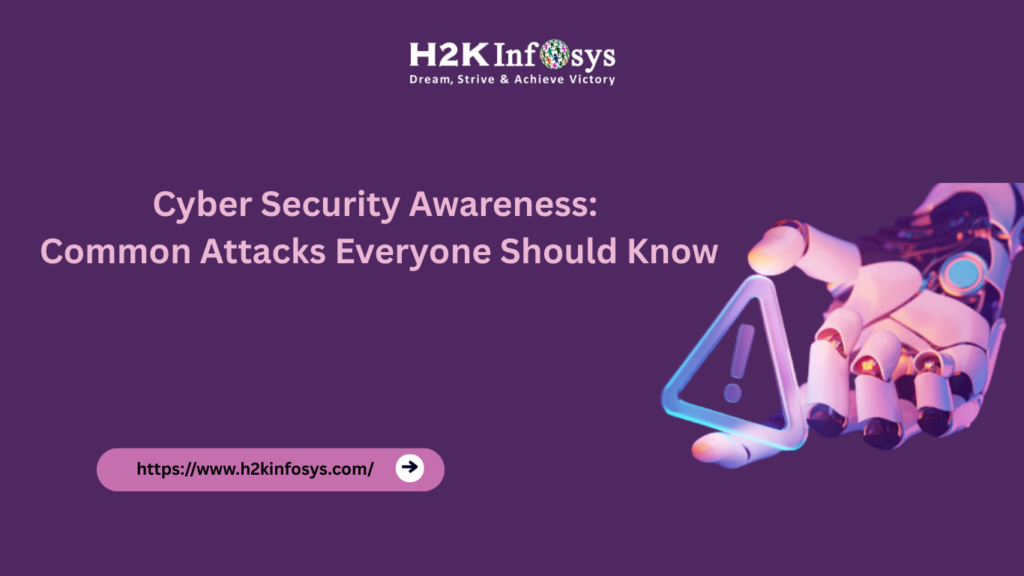Introduction: Enterprises at the Crossroads of Digital Risk
As organizations accelerate cloud adoption, AI integration, automation, and remote work models, security leaders are facing a perfect storm of threats. The cybersecurity challenges in 2026 are no longer theoretical risks; they are active, evolving, and deeply embedded in enterprise operations.
From ransomware syndicates using artificial intelligence to identity-based attacks bypassing traditional defenses, enterprises must rethink how they protect data, systems, and users. The complexity of modern IT environments has made cybersecurity challenges in 2026 far more sophisticated than anything seen before.
This is why businesses are investing heavily in skilled professionals who have completed Cyber security training with job placement, hands-on labs, and globally recognized certifications like CEH Certification.
In this blog, we explore the Top 5 Enterprise Cybersecurity Challenges in 2026, why they matter, and how job-oriented cybersecurity training and placement programs prepare professionals to meet these challenges head-on.
1. AI-Driven Cyber Attacks Outpacing Traditional Security
One of the most dangerous cybersecurity challenges in 2026 is the rise of AI-powered cyberattacks. Attackers now use machine learning to automate reconnaissance, generate realistic phishing emails, and evade detection systems.
Why Enterprises Are Vulnerable
Traditional security tools rely heavily on:
- Static rules
- Known signatures
- Manual threat analysis
AI-driven malware adapts in real time, learning from failed attempts and modifying its behavior. This makes conventional defenses ineffective against modern threats, turning this into one of the most persistent cybersecurity challenges in 2026.
Skills Enterprises Need
Organizations are urgently hiring professionals skilled in:
- AI-based threat detection
- Security automation (SOAR)
- Behavioral analytics
- Advanced SIEM platforms
A job-ready cyber security course with placement equips learners with these in-demand skills using real enterprise tools.
2. Cloud Security Misconfigurations and Multi-Cloud Risk
Cloud computing has transformed business operations, but it has also introduced one of the most widespread cybersecurity challenges in 2026, misconfigured cloud environments.
The Real Problem Isn’t the Cloud
Cloud providers offer secure infrastructure, but:
- Open storage buckets
- Excessive IAM permissions
- Poor access visibility
- Insecure APIs
continue to expose enterprise data.
Over 80% of cloud breaches are caused by configuration errors, making this one of the most costly cybersecurity challenges in 2026.
What Enterprises Are Looking For
Companies now demand professionals trained in:
- Cloud Security Posture Management (CSPM)
- Identity and Access Management (IAM)
- Zero Trust Architecture
- AWS, Azure, and GCP security tools
This demand has increased enrollment in online courses for cybersecurity that include hands-on cloud labs and cyber security training and placement support.
3. Ransomware-as-a-Service and Data Extortion
Ransomware has evolved into a structured criminal economy, creating one of the most damaging cybersecurity challenges in 2026 for enterprises of all sizes.
How Modern Ransomware Works
Attackers now:
- Encrypt enterprise data
- Steal sensitive information
- Threaten public exposure
- Target backup systems
Even organizations with disaster recovery plans are not immune, making ransomware one of the most feared cybersecurity challenges in 2026.
Enterprise Skill Requirements
Companies are hiring cybersecurity professionals skilled in:
- Malware analysis
- Digital forensics
- Incident response
- Backup integrity verification
Certifications such as CEH Certification play a critical role in validating these skills.
A practical cyber security training with job placement program prepares learners to handle real ransomware incidents, not just theoretical scenarios.
4. Identity-Based Attacks and Zero Trust Implementation
The disappearance of the traditional network perimeter has turned identity into the primary attack surface, one of the fastest-growing cybersecurity challenges in 2026.
Why Identity Is the New Target
Attackers exploit:
- Stolen credentials
- OAuth tokens
- Privilege escalation
- Third-party access
Once inside, lateral movement becomes easy without proper controls.
Zero Trust: Necessary but Difficult
While Zero Trust is the enterprise standard, implementation is complex due to:
- Legacy systems
- Poor IAM governance
- Skill shortages
This makes identity protection one of the most complex cybersecurity challenges in 2026.
Career Opportunity
Professionals trained in:
- Zero Trust frameworks
- Privileged Access Management (PAM)
- Identity lifecycle management
are in exceptionally high demand. This is why cybersecurity training and placement programs now emphasize identity security modules.
5. Cybersecurity Talent Shortage and SOC Burnout
Perhaps the most overlooked cybersecurity challenges in 2026 is the human factor. Despite massive security investments, enterprises still lack skilled professionals to manage and monitor systems effectively.
The Workforce Crisis
Organizations face:
- Millions of unfilled cybersecurity roles
- Overworked SOC teams
- High attrition rates
- Delayed incident response
Without trained professionals, even the best tools fail, making workforce readiness one of the most dangerous cybersecurity challenges in 2026.
What Employers Actually Want
Enterprises prioritize candidates with:
- Hands-on experience
- Tool-based training
- Incident-handling skills
- Industry certifications
This is why cyber security training with job placement has become the preferred hiring pipeline for enterprises.
Why Cyber Security Training and Placement Is Critical in 2026
The growing complexity of cybersecurity challenges in 2026 has reshaped how organizations evaluate talent. Degrees alone are no longer enough.
Job-Oriented Learning Matters
A modern cyber security course with placement offers:
- Live instructor-led sessions
- Real-time enterprise projects
- Resume and interview preparation
- Dedicated placement support
This approach bridges the gap between education and employment.
The Value of CEH Certification in Enterprise Security
The Certified Ethical Hacker (CEH Certification) remains one of the most respected credentials for addressing real-world cybersecurity challenges in 2026.
CEH validates skills in:
- Ethical hacking
- Vulnerability assessment
- Network and application security
- Incident response
When combined with cybersecurity training and placement, CEH significantly improves employability across SOC, penetration testing, and security analyst roles.
Why Choose H2K Infosys for Cyber Security Training?
At H2K Infosys, our programs are built around real enterprise requirements, not outdated theory. We align our curriculum directly with modern cybersecurity challenges in 2026.
What You Get
- Live instructor-led cyber security training
- Hands-on enterprise security projects
- CEH Certification preparation
- Career guidance and interview coaching
- Proven cyber security training and job placement support
Our goal is simple: make you job-ready for today’s enterprise security demands.
Conclusion: Prepare Today for Tomorrow’s Security Battles
The evolving cybersecurity challenges in 2026 AI-powered attacks, cloud misconfigurations, ransomware, identity threats, and workforce shortages are redefining enterprise security strategies worldwide.
For professionals, this creates an extraordinary career opportunity.
By enrolling in a Cyber security course with placement, earning CEH Certification, and gaining hands-on experience through online courses for cybersecurity, you position yourself at the forefront of one of the fastest-growing industries globally.
Start your journey with H2K Infosys today and become the cybersecurity professional enterprises need in 2026 and beyond.


























